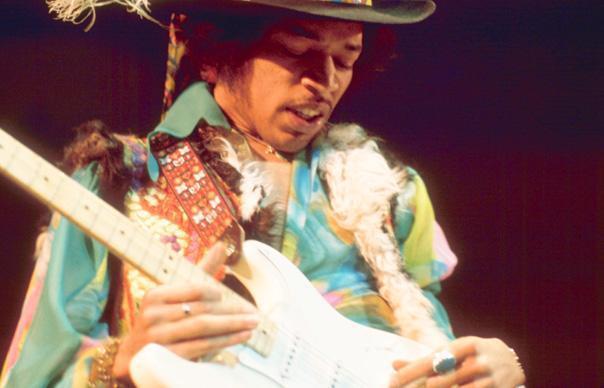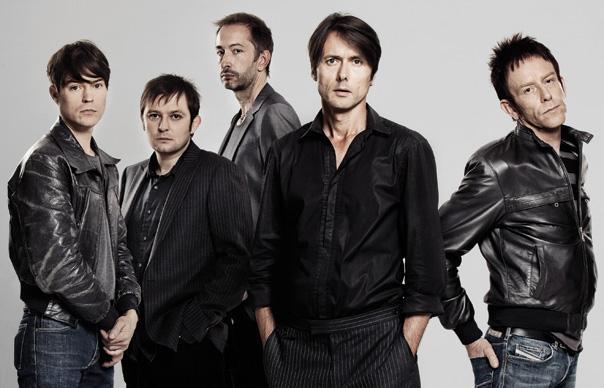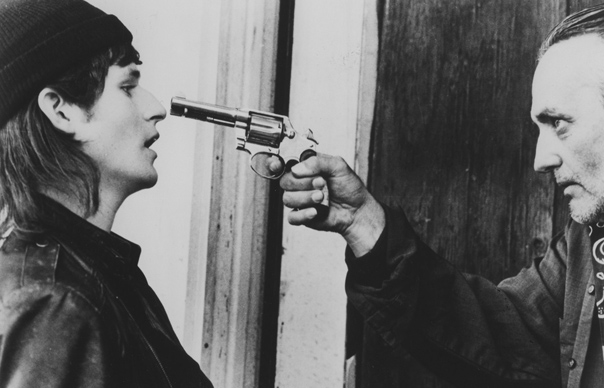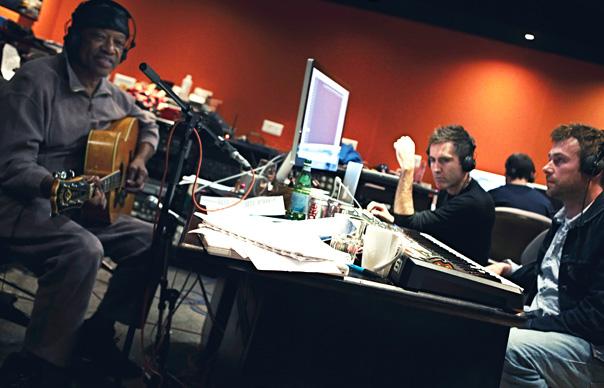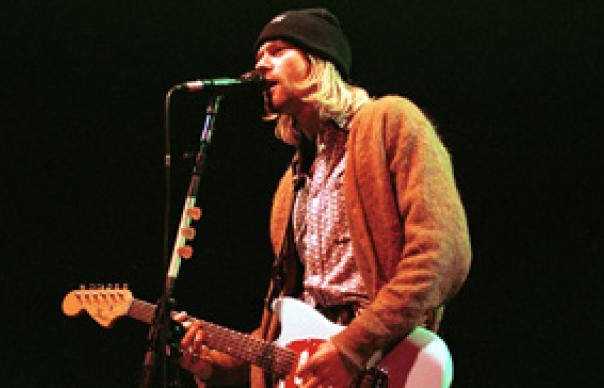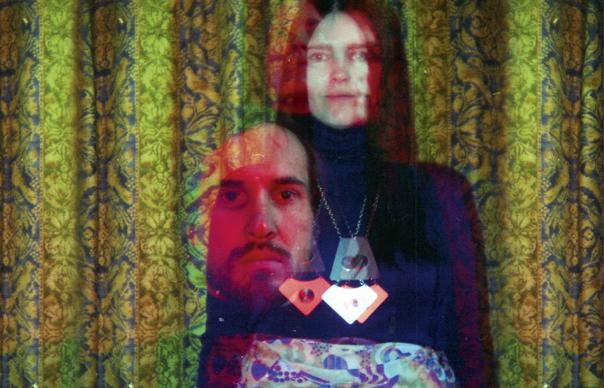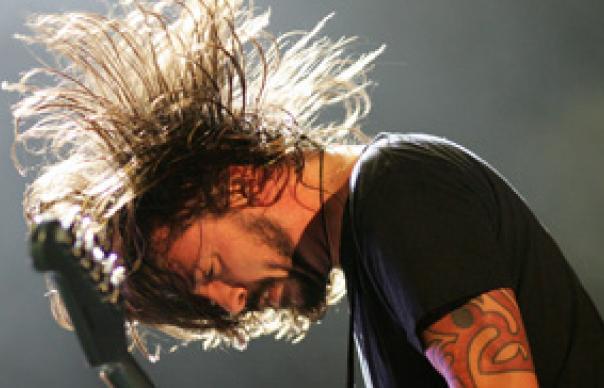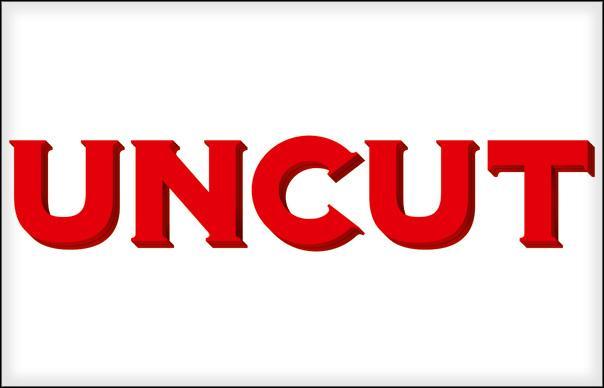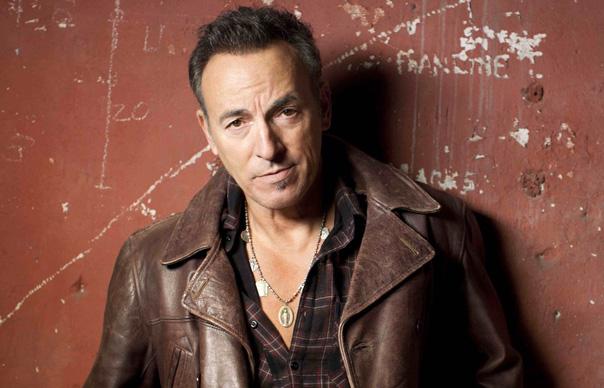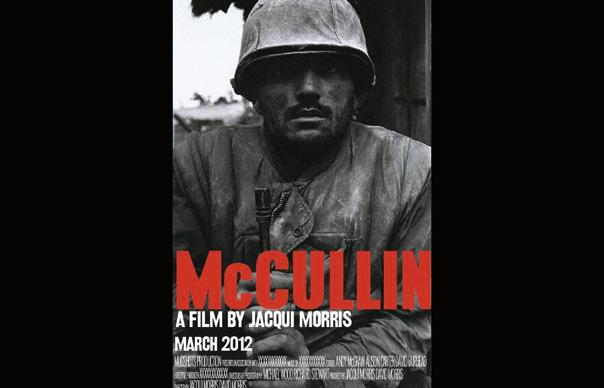Former Kraftwerk percussionist Karl Bartos features in the new issue of Uncut (February 2013, Take 189), out now, discussing the upcoming Kraftwerk retrospective shows in London, and his own new solo album, Off The Record. As a companion piece, here’s Ralf Hütter taking us through the high points of Kraftwerk’s discography in a fascinating ‘album by album’ from Uncut’s October 2009 issue (Take 149).
___________________
He might have spent most of the past two decades cocooned in the Kubrickian perfectionism of his secret Kling Klang studio in Düsseldorf, but Kraftwerk’s Ralf Hütter is on unusually warm form when Uncut joins him for a rare face-to-face chat. Still surprisingly boyish at 62, the founding father of techno-pop, electro, techno, house and hip hop radiates sly mischief and ultra-dry German humour.
The acrimonious departure last year of Hütter’s fellow Kraftwerk founder, Florian Schneider, is still a sensitive subject. “We haven’t seen him for a long time,” Hütter shrugs. “I cannot speak for my former partner, friend and co-composer, but he always hated touring and concerts.”
In 2009, Kraftwerk are in the middle of their busiest creative phase for years, with a revamped studio setup and new album in gestation. This year alone they have played sold-out shows around the world, including a South American tour with Radiohead, and next month they release Der Katalog – their eight biggest albums in sumptuous, digitally remastered versions. The perfect time, then, for the elusive Hütter to relive four decades inside one of the greatest enigmas in music… Interview: Stephen Dalton
___________________
KRAFTWERK
(Vertigo, 1970)
Leaving behind their long-haired student jazz-rock band, Organisation, Hütter and Schneider established both the Kraftwerk name and their Kling Klang studio with this freeform instrumental four-track debut. Features a guest appearance by Klaus Dinger, later of Krautrock legends Neu!. But don’t use the K-word around Ralf…
“We were finding Kraftwerk, setting up the Kling Klang studio, finding musicians to work with, discovering composition, discovering the German language, human voice, synthetic voice. Me and Florian had our Kling Klang studio since 1970, and before that we had a free-form music group. We used to play at universities or parties or art galleries. And one day we said: OK, there must be a mothership, a laboratory, a studio HQ where we put things together.
“We were mostly like the art scene band, always on the same bill as Can. We had different drummers, and we engaged Klaus Dinger one time, but always changing. We had jazz drummers, rock drummers, and I had my little drum machine.
“This name, Krautrock – it’s coming from some idiots, I don’t know who, but it was never used in those times. The music was called Deutsch Rock, or electro rock, underground music, free rock. It really had no name, and it also had different colours in different cities. Like from Berlin it was more cosmic, with Cluster and Tangerine Dream. We were from Düsseldorf so more industrial, and Can in Cologne were more rock-orientated.
“This name was later introduced by people who maybe like this music, but it’s an insult, and it’s also nonsense because we don’t eat sauerkraut. And the music wasn’t made by vegetables. It’s like saying ‘fish and chips music’, or ‘spaghetti music’. It’s great that people can see the creativity, but maybe you can think of a more intelligent name?”
RALF & FLORIAN
(Mute/EMI, 1973)
Emphasising their status as a duo, Hütter and Schneider began to formulate a more polished, minimal, electronic sound on their transitional third album. This hard-to-find rarity is now due for re-release in the next wave of remasters.
“We were a duo all the time, we just had different studio musicians. But we were always looking for the perfect beat to be played by machines. We tried again and again, but it just never worked out, because they were never in synch. We were close to the visual arts scene in Düsseldorf, that is very important for Kraftwerk. It was audio-visual music because of the paintings and soundscapes. Words cannot really describe this, but you can actually see our music, I think…
“We listened to quite a lot of electronic stuff at that time. On the art scene, and on the radio. We were brought up within the kind of classical Beethoven school of music, but we were aware there was a contemporary music scene, and of course a pop and rock scene. But where was our music? Finding our voice, I think that was the use of the tape recorder. So that’s what happened, we tried to forget all the things we knew before. I think our contact to the tape recorder made us use synthetic voices, artificial personalities, all those robotic ideas.
“I’m working on the album tapes with my old friend, Emil Schult. This should maybe be our next interview, but it will be Kraftwerk 1 and 2, Ralf & Florian, and maybe one or two live ambient situations, whatever we find in the archive. It’s all in one part of our Kling Klang studio archives, but it needs some more work, redusting and remastering. There are lots of drawings and concepts, ideas that maybe a decade or two later came into reality. There have been bootlegs of these albums, but they are all printed from vinyl. Nobody has the tapes. Only we have the tapes.”
AUTOBAHN
(Mute/EMI, 1974)
Kraftwerk’s mainstream breakthrough, marking their emergence as revolutionary electro-pop minimalists. A condensed version of the mesmerising 22-minute title track became an international hit, leading to tours on both sides of the Atlantic. Some even saw its “fahren fahren fahren” refrain as a sly Beach Boys homage…
“Autobahn was about finding our artistic situation: where are we? What is the sound of the German Bundesrepublik? Because at this time bands were having English names, and not using the German language. Some people have said we introduced German rap, but it’s not really rap, its sprechgesang – spoken word singing. And from these rhythms and sounds we developed musical landscapes.
“It’s not about cars, it’s about the Autobahn. People forget that. It’s a road where we were travelling all the time: hundreds of thousands of kilometres from university to art galleries, from club to home. We didn’t even have money to stay in hotels so at night we’d be travelling home after playing somewhere. That’s very important, it’s not about cars, it’s about the Autobahn. It’s also a road movie, with a humorous twist.
“The white stripes on the road, I noticed them driving home every day from the studio, 20 kilometres on the Autobahn. And then the car sounds, the radio – it’s like a loop, a continuum, part of the endless music of Kraftwerk. In Autobahn we put car sounds, horn, basic melodies and tuning motors. Adjusting the suspension and tyre pressure, rolling on the asphalt, that gliding sound – pffft pffft – when the wheels go onto those painted stripes. It’s sound poetry, and also very dynamic.
“In the case of The Beach Boys, that song is about a T-Bird: ‘She had fun fun fun until daddy took her T-Bird away.’ But ours is about a Volkswagen or Mercedes. The quote is really more ethnic. People said: are you doing surfing on the Rhine? Yes, maybe, but we don’t have waves. It’s like an artificial joke. But no, it’s not a Beach Boys record, it’s a Kraftwerk record.
“All the tracks are like film loops, short films. ‘Morgenspaziergang’ [roughly translated as ‘morning stroll’] is what we wrote when we came out of the studio. We were always working at night and then in the morning, everything seems fresh and our ears are open again. Everything silent.
“We toured with Autobahn for the first time outside Germany. Just once in Paris University was our first time outside Germany, I think in ’73. But with Autobahn we also toured a very long time in America, then a shorter tour in England. But Germany had to be cancelled because there was no interest. That
was in ’75.
“The record was a very big success but nobody could imagine it live – is this a studio record? Or electronic? Nobody thought about going to see Kraftwerk behind the Autobahn record. Before that we toured in Germany all the time, from the late ’60s up to 1973. But then three years later nobody wanted to see us again. We came back in 1981, but still it was nothing like other countries.”
RADIO-ACTIVITY
(Mute/EMI, 1975)
Kraftwerk’s first all-electronic album, a nocturnal nightmare soundtrack with a dual meaning: the sound of crackling transistors and Cold War paranoia. Recorded during the Baader-Meinhof trials, which divided Germany and turned even young musicians into terrorist suspects.
“It’s a science fiction kind of album. Horror and beauty. The concept was infiltration by radio station – which is maybe more dangerous than radioactivity. We worked with tapes, editing pieces, glue. All electronics. And more singing and speaking, like speech symphonies.
“It was written in two languages, English and German. Autobahn was just one. It was not a statement, just these lyrics came to our mind – “Radioactivity, is in the air for you and me…” Just ideas coming together, and then anticipating the next album, which was all in two languages, like in films. There were always talks about Kraftwerk working with films, but they didn’t happen – apart from [German director Rainer Werner] Fassbinder, but he used finished pieces of our music in different interpretations in his films. Radio-Activity was a favourite of Fassbinder, he used it in Russian Roulette and in Berlin Alexanderplatz.
“When we were working on the artwork, we had these long rolled posters so our neighbours were reporting that we had weapons – that was the whole situation at that time. We travelled late at night and we’d be stopped for controls, Düsseldorf is a very controlled city, so they stop your cars and ask for your papers and permits. We were very night people, club scene people. They stopped us on the Autobahn, going to the studio. The police even came to our studio – because of the noise, maybe. But they didn’t come and knock on the door, they’d be coming in with pulled guns saying: ‘Where are the weapons?’”
TRANS-EUROPE EXPRESS
(Mute/EMI, 1977)
A romantic hymn to European integration, Trans-Europe Express earned its place in pop history as an unlikely catalyst for the nascent New York hip-hop scene, which liberally sampled its pounding metallic beats and piston-pumping rhythms. Hilarious sleeve artwork depicts the band as impeccably neat young businessmen.
“Trans-Europe Excess is basically a symphony of trains – train noises, Vienna, Paris. Travel is a big part of Kraftwerk. The pictures are not ironic, that’s our reality, that’s the life we are experiencing. That’s our cultural identity as Europeans, with the spirit of European culture. As you know, in Düsseldorf we live 20 minutes from the Netherlands, half an hour from Belgium, two hours from France. Berlin is farther away than Paris, even without the Wall. With all our friends, and at school, English language was very prominent. Living in Germany at that time, it was quite normal to talk in different languages. “Hall Of Mirrors” was written very fast. The mirror is a big theme with artists – like “Man In The Mirror” by Michael Jackson, and many others. At one time we also had mirrors as part of our Kling Klang studio to get visual feedback. There are some beautiful covers of that song. I like the version on the Trans Slovenian Express album, I think it is Anne Clarke singing to some Slovenian sounds. And also during the punk period, Siouxsie And The Banshees played that song.
“‘Showroom Dummies’, that is the transition from human to dummy to robots, from posing and static to animation and motorising. We were on our way to robotisation… is that a word? We are mainly talking about ourselves in that song, we felt photographed to death. That’s why we brought in the dummies, and later robots, because they have more patience with photographers. The lyrics in ‘Showroom Dummies’ are our day-to-day reality, going to clubs. In Germany the clubs are open very late, we don’t have that curfew like in England, the last drink at 9.30 or something. Ha! We are not playing that song at the moment but we played it a lot in ’81, and I think we will play it again because it’s valid.
“We received a Disco Award for that album in America – Best European Disco Band or something, it was very funny. I was in New York when the record came out doing some promo and then somebody from Capitol Records, the disco department or whatever, took us to some after-hours illegal clubs. I went with Florian and we were doing our little dance, and they played “Metal On Metal”. We knew the record because it was fairly new – but it went for five minutes, 10, 15, 20 minutes. What was happening? Then we found out they had two acetates, two pressings, and it was Bambaataa playing. Fantastic live DJing, that was in ’77, when they began experimenting with acetate like that. “Planet Rock” was five years later, and first of all they forgot to print my name. We had no credit so we called our publishers – and now they have our names on the record. Maybe that was because it was just a club record for a few thousand people, but then it exploded.”
THE MAN-MACHINE
(Mute/EMI, 1978)
Increasingly mechanised and minimal, this blueprint finds Kraftwerk at their most humorous, from the deadpan disco-funk of “The Robots” to the prophetic celebrity snapshot “The Model”, a future UK No 1 whose pointedly satirical subtext is sometimes overlooked. Also includes the much-covered romantic ballad, “Neon Lights”.
“At one point, playing an arts centre nearly 10 years before ‘The Robots’, I had this drum machine working, we were playing with feedback and strobe lights. We left the stage and people kept dancing to the machines. We didn’t have Kraftwerk, we didn’t have the robots, we didn’t have The Man-Machine album, nothing – but the concepts were already there.
“The lyrics to ‘The Model’ are identical in both languages, I think. I translated them. There is no difference. It’s about the context of an object, paying money: for beauty we will pay. I think the cynicism is obvious, don’t you? And then we’d get asked by everyone in clubs we went: is it me? Who is this? But it’s not based on anybody.
“The words are more like musical keys or clues, like in Autobahn or The Man-Machine, the sound says it all. Because we work so much with machines, the best music is playing itself – maybe through me, or through my friends and colleagues, but it’s coming from itself. That’s what we try to do. It’s not always possible, but we try our best. The ultimate speech composition is ‘Boing Boom Tschak’ [from ’86’s Electric Café] because the music speaks itself. It’s also endless because once you have that concept you can go on for five minutes, five hours or five days.”
COMPUTER WORLD
(Mute/EMI, 1981)
In a pre-digital age, Kraftwerk predict a computer-dominated future with pristine melodies and supple rhythms. But behind the surface shimmer lies a message about a new era of electronic surveillance…
“We didn’t even have computers. Even though the music was created by synthesisers and sequencers, it was analogue, pre-computer. We got our first home computers after the album was finished, the first Ataris. But no, it wasn’t a warning, it was reality. We were there, even though the album wasn’t made on computers, it was our reality. Society was being computerised, a lot of people didn’t notice at that time but we did. Computers were being used by states, the KGB, Interpol, Deutsche Bank.
“It was also talking about us: Kraftwerk, the Kling Klang studio, that was our computer world. We computerised our faces, and automated some of the lyrics. And “Pocket Calculator”, again it was really anticipating some kind of mobility. It really was made on a pocket calculator and toy instruments, like a Stylophone and a small children’s keyboard.
“We would like to have had laptops in 1981, but computers were huge IBMs, and they were not even transportable. The first Apple came in the late 1970s, but it was not available for us. When we first took our digital equipment into Eastern Bloc countries we had to list all of our equipment, because they were also part of weapons technology. We had to prove they are used for music and not weapons. Everything had to be listed, each piece of equipment, each brand name. Not from their side, from our side, in case you are bringing high-tech rocket material into the Eastern Bloc. But no, we were making art and music.”
TOUR DE FRANCE
(Mute/EMI, 2003)
Decades in gestation – building on their 1983 single of the same name – Hütter and Schneider’s final collaboration pays homage to their shared love of cycling. Originally released as Tour De France Soundtracks, it is now being reissued with its shorter intended title.
“It’s just called Tour De France. The Soundtracks was just a tracklisting at that time. It’s different films again, different soundtracks: ‘Vitamin’, ‘Aero Dynamik’, ‘Titanium’. But it’s also about personal experience, about regeneration, like a training plan.
“Sometimes we forget about things and they come back to us, they get a new meaning and a new dynamic, and then we find the concentration to finish a piece of work. Tour De France was all written before as scripts, notes, keywords, lyrics and concepts. In ’83, with the Tour, in a rush we released the single. Then it suddenly disappeared as we worked on digital technology, samplers, digitising our studio.
“And then, the 100 years’ birthday of the Tour was the signal to finish the album. All the mixes we did during the Tour, when we were invited by the directors to follow by helicopters and in the director’s car. Then we returned for the final mix. And when the Tour came to Paris, we delivered the tapes. Sometimes I get criticised for taking so long with the last album, but I can only answer that Autobahn took 28 years to make. Kraftwerk, and pre-Kraftwerk, was like seven years of working. People think you walk into a studio, turn some knobs and a new album is finished. That might be the case for one song. Maybe one record, maybe two – but not a lifetime’s work.”


